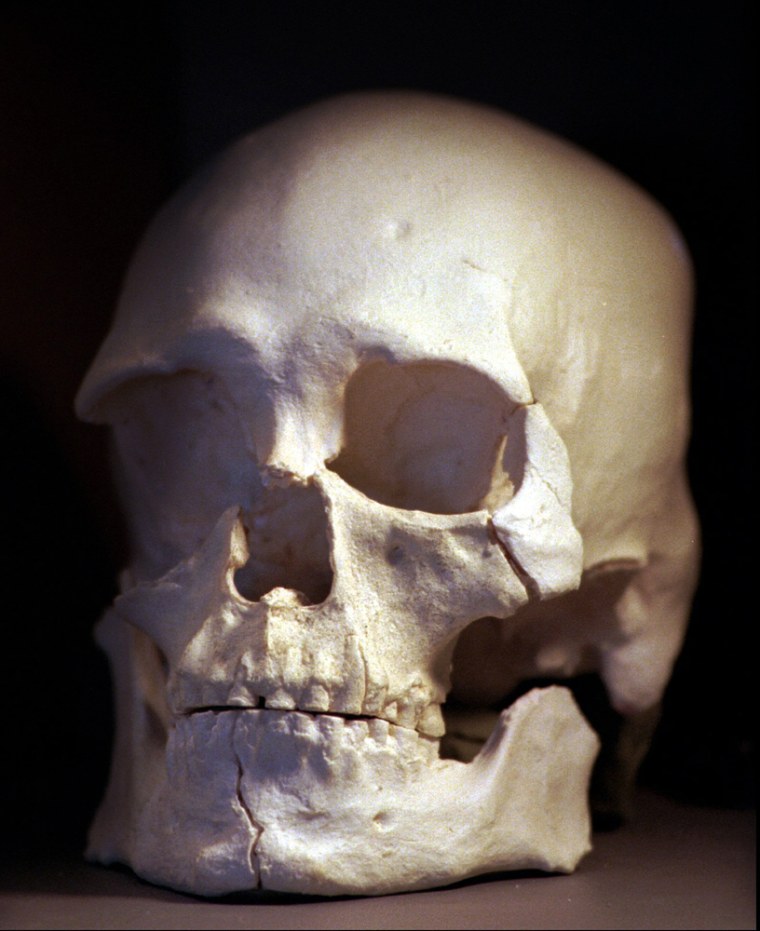Kennewick Man was laid to rest alongside a river more than 9,000 years ago, buried by other people, a leading forensic scientist said Thursday.
The skeleton, one of the oldest and most complete ever found in North America, has been under close analysis since courts sided with researchers in a legal battle with Indian tribes in the Northwest who wanted the remains found near the Columbia River reburied without study.
Douglas Owsley, an anthropologist at the Smithsonian’s National Museum of Natural History, discussed his findings in remarks prepared for delivery Thursday evening at a meeting of the American Academy of Forensic Sciences in Seattle.
“We know very little about this time period,” Owsley said in a telephone interview. “This is a rare opportunity to try and reconstruct the life story of this man. ... This is his opportunity to tell us what life was like during that time.”
Buried or drowned?
Researchers have disagreed over whether Kennewick Man was buried by other people or swept up in a flood and encased in sediment.
Owsley concluded the man was deliberately buried, between 2 and 3 feet (60 and 90 centimeters) deep, his body placed in the grave, head slightly higher than feet, hands placed at his sides.
The location was riverside, with the body parallel to the river and head pointing upstream.
Using an industrial CT scanner, Owsley was able to study the skeleton in fine sections and also get a better look at a spear or dart point imbedded in Kennewick Man’s hip.
New perspective on point
The point has previously been described as a Cascade point, typical of the region, but Owsley said that is not the case. Cascade points tend to have two pointed ends and are sometimes serrated, he said, while the point in Kennewick Man has a pointed end and a stem.
The spear or dart entered the man from the front, moving downward at a 77-degree angle, Owsley said. Previous analysis had indicated it might have hit from the back, he noted.
The point was not the cause of death, he said, saying, “This is a healed injury.”
“There was no clear indication in the skeleton of cause of death,” Owsley said. Kennewick Man had undergone “a lot of injuries, this guy was tough as nails.”
There are three types of fractures in the bones, Owsley said, ones the man suffered in his lifetime and which had healed; fractures that occurred after burial from aging of the bones and the ground settling, and breaks that occurred when the skeleton was unearthed.
Studied by 20 scientists
A team of 20 forensic scientists has been studying the skeleton, he said, and have concluded that the skull doesn’t match those of Indian tribes living in the area.

“We know very little about this time period. Who the people were that were the earliest people that came to America,” Owsley said. “We are finding out they were coming thousands of years earlier than we had thought,” arriving not just over the Bering Strait but by boats and other means.
“This is a very rare discovery. You could count on your fingers the number of relatively complete skeletons from this time period,” Owsley said.
Following discovery of the bones in 1996, the Umatilla, Yakama, Nez Perce and Colville tribes urged that the skeleton be reburied without scientific study. They argued that the bones were covered under the Native American Graves Protection and Repatriation Act.
Scientists sued for a chance to study the remains and a federal court ruled there was no link between the skeleton and the tribes.
